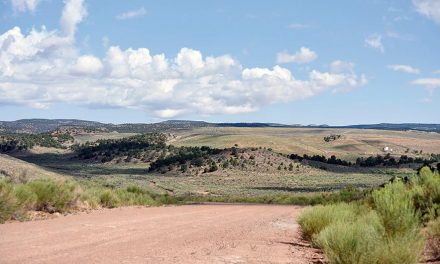
Health care workers navigate Omicron surge
WINDOW ROCK
With the arrival of the Omicron variant on Navajo, COVID-19 cases jumped dramatically last week, with a daily high of 294 cases last Thursday.
But so far hospitalizations haven’t risen commensurately.
In a town hall Friday, President Jonathan Nez said he was grateful that even though cases grew exponentially since New Year’s there have been few deaths.
He indicated Omicron is generally not leading to the “extreme sickness” seen prior, especially if you are vaccinated.
“We’re seeing a high increase in COVID-19 positive cases, but because many people have the vaccine, they’re not ending up in the hospital, so hospitals are not being overrun,” said Emergency Department nurse Dorthina Francisco from Crownpoint Health Care Facility. “This is evidence that vaccines work.”
Francisco reported that most of the people ending up in the hospital are unvaccinated.
“The vaccine is offering protection,” echoed Tuba City Regional Health Care doctor Jeffrey Daniels. “That’s what we’re seeing in the emergency room.”
However, he cautioned that while it’s important to remember how much progress we’ve made in the fight against COVID, it’s not time to let our guard down.
What’s tricky with Omicron is that vaccinated people can have the virus and not even realize it, he said.
“Just because you’re feeling great doesn’t mean you don’t have it,” he said. “That’s why we have to be careful with our family and friends.”
Capt. Brian Johnson, Navajo Area IHS acting deputy director reported that they are also seeing an increase in cases among staff so they are having to double down on protective measures in health-care facilities.
“It’s a very tough challenge, and we’re seeing this trend, of course, across the United States, where health-care workers are getting the infections and having to isolate,” said Johnson.
He said it’s important for everyone to continue to follow the safety guidelines and get vaccinated.
“It’s the best tool in our toolbox to fight against COVID-19,” said Johnson. “The best thing you can do is get your full COVID-19 vaccine series, followed by a booster.”
Additionally, he recommended avoiding large gatherings, especially indoors, and wearing two masks.
‘Back in the thick of it’
Kevin Gaines, acting chief medical officer for Navajo Area IHS, appealed to the public to be patient with health-care providers who are doing the best they can with the staff and resources they have available.
“As we’ve seen a sharp increase in COVID across the nation this week, we’ve also had a number of our staff test positive and due to that they’ve had to be off work so they don’t present a risk to their coworkers or the patients,” said Gaines.
“Unfortunately, the result of that is that our staff that are already stretched thin are being stretched even further in their attempts to provide care to their patients,” he said.
As an example, Gaines said for those patients who need to be transported to a higher level of care, ER staff who normally spend one to two hours to find a bed for a patient are now sometimes taking one to two days because of the lack of bed capacity, not only on the reservation and surrounding area, but in the whole United States.
“We always try to find beds for our patients who need higher level of care as close to home as possible, but unfortunately, we’re having to reach out to states throughout the country,” said Gaines.
He said frontline staff might not only be dealing with difficult scenarios at work but might also be dealing with COVID-19 related illnesses and deaths in their own families at home.
“As physicians and physician assistants, we’re not different than our patients,” said TCRHC Dr. Angela Broad White.
“We’re dealing with many of the same challenges that our patients are dealing with,” she said, “like worrying about loved ones getting ill, worrying about ourselves getting ill, dealing with childcare interruptions and dealing with isolation from our support systems due to the need to social distance and protect ourselves and our family members.”
Gaines also warned that before Omicron, medical providers had a pretty good supply of treatments for COVID patients, but a majority of those treatments are not effective against Omicron.
“The treatments we have to treat Omicron are in very limited supply and that’s true across the country,” said Gaines.
Available supplies are going to patients who are at highest risk, he said.
“So, if you’re hesitating to get a vaccine, because you feel like you can get treated if you test positive, just know that’s probably not going to be the case for the next couple of months,” he said.
TCRHC pediatric specialist Dr. Amanda Burrage said she believes everyone is feeling the emotional burden of the pandemic whether they’re in health care or not.
“It’s been a very difficult two years and it’s hard to be back in the thick of it again,” said Burrage.
She said they are back to testing about 200 to 300 people a day at TCRHC, but the good news is as of yet hospitalizations haven’t risen.
“We’ve seen more cases in the past week than we have ever seen here in Tuba City,” she said. “Thankfully, the Omicron variant does seem to be less severe for most people. That’s a huge relief…”
As a public service, the Navajo Times is making all coverage of the coronavirus pandemic fully available on its website. Please support the Times by subscribing.
How to protect yourself and others.
Why masks work. Which masks are best.
Resources for coronavirus assistance







 Highway 264,
Highway 264, I-40, WB @ Winslow
I-40, WB @ Winslow